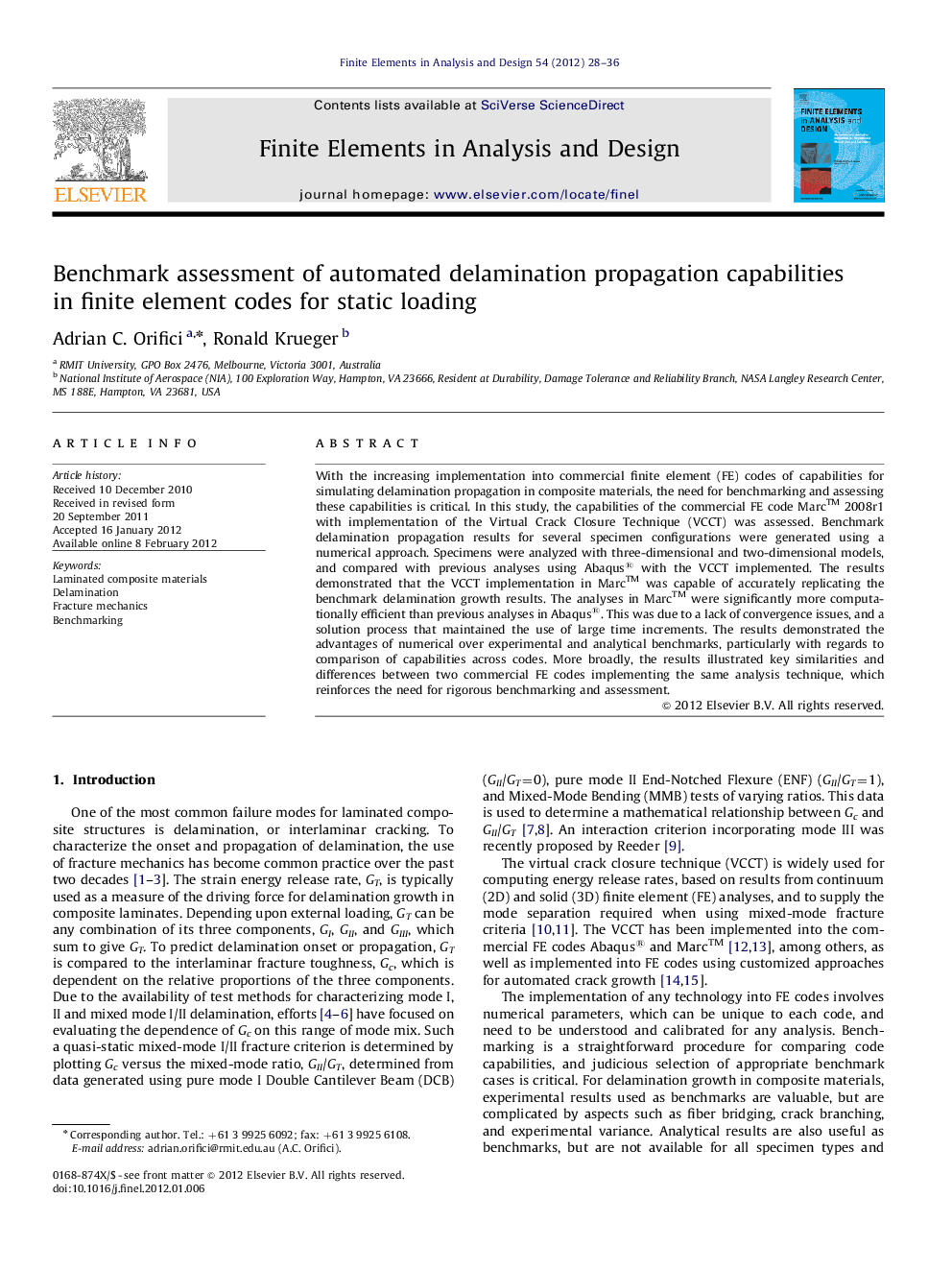| Article ID | Journal | Published Year | Pages | File Type |
|---|---|---|---|---|
| 514599 | Finite Elements in Analysis and Design | 2012 | 9 Pages |
With the increasing implementation into commercial finite element (FE) codes of capabilities for simulating delamination propagation in composite materials, the need for benchmarking and assessing these capabilities is critical. In this study, the capabilities of the commercial FE code Marc™ 2008r1 with implementation of the Virtual Crack Closure Technique (VCCT) was assessed. Benchmark delamination propagation results for several specimen configurations were generated using a numerical approach. Specimens were analyzed with three-dimensional and two-dimensional models, and compared with previous analyses using Abaqus® with the VCCT implemented. The results demonstrated that the VCCT implementation in Marc™ was capable of accurately replicating the benchmark delamination growth results. The analyses in Marc™ were significantly more computationally efficient than previous analyses in Abaqus®. This was due to a lack of convergence issues, and a solution process that maintained the use of large time increments. The results demonstrated the advantages of numerical over experimental and analytical benchmarks, particularly with regards to comparison of capabilities across codes. More broadly, the results illustrated key similarities and differences between two commercial FE codes implementing the same analysis technique, which reinforces the need for rigorous benchmarking and assessment.
► Delamination propagation capabilities of VCCT in Marc™ 2008r1 was assessed. ► 2D and 3D analysis, and comparison with previous Abaqus® results. ► Marc™ replicated the benchmark results, though had issues at mesh length changes. ► Marc™ was significantly more computationally efficient than Abaqus®. ► Demonstrated advantages of numerical over experimental and analytical benchmarks.
